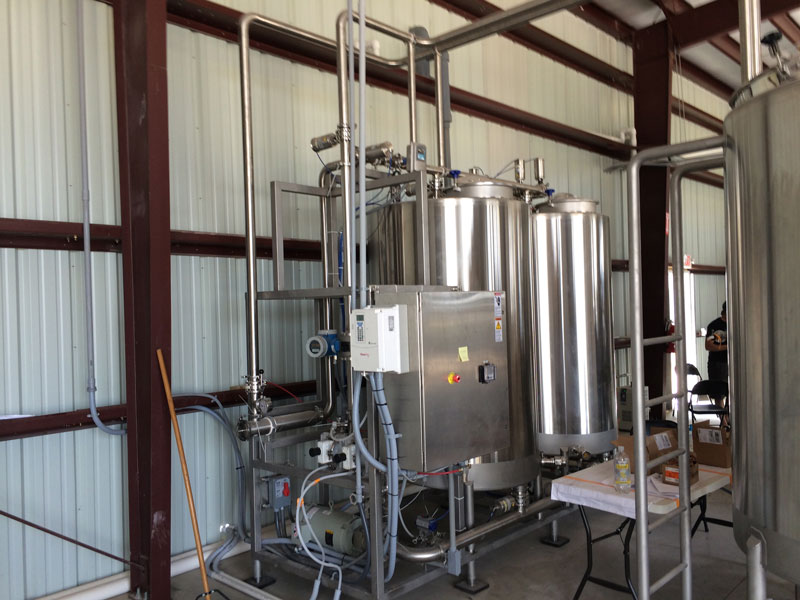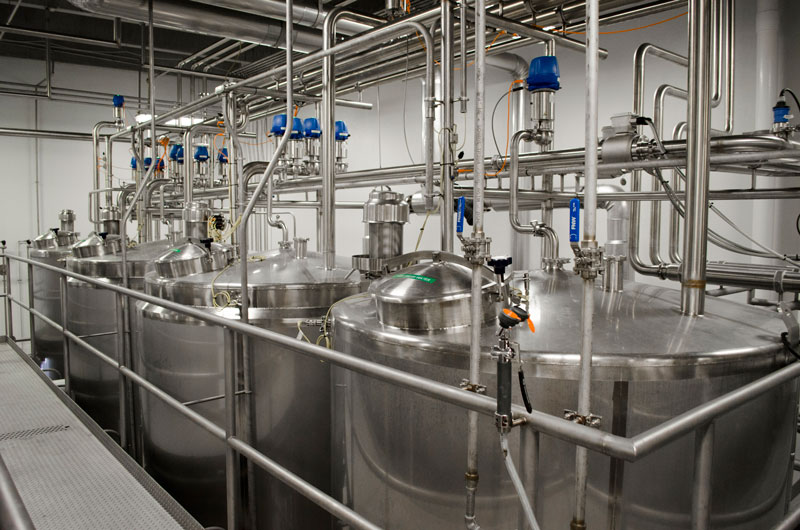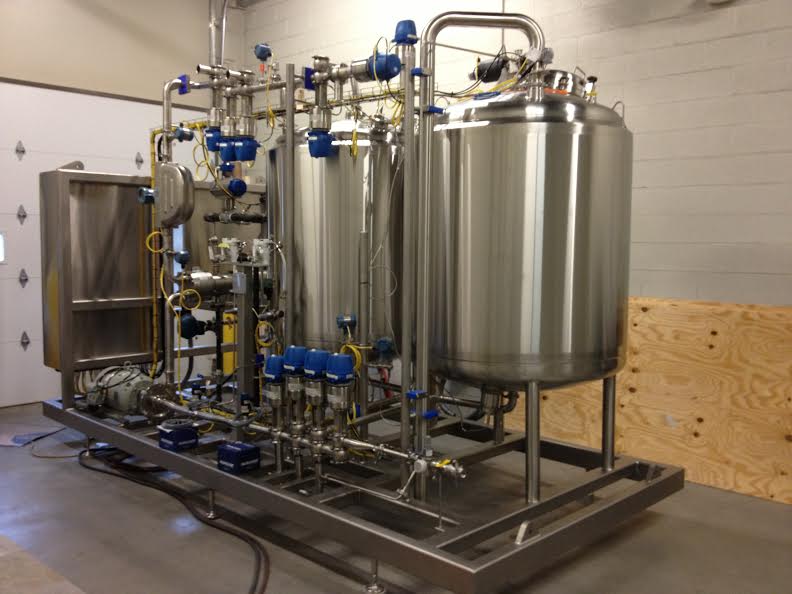Clean In Place
CIP processes typically consist of the following steps:
- Product flush and recovery
- Alkaline/caustic cleaning step to remove fats and proteins
- Alkaline/caustic flush and (optional) recovery
- Acid wash to remove minerals
- Acid flush and (optional) recovery
- Final water rinse
CIP systems may be used in dairies, breweries, ice cream plants, sauce production lines, bakeries, and meat processing plants.
Plant Scale Systems
- Bulk acid and caustic storage tanks.
- Caustic makeup tank.
- Acid makeup tank.
- Caustic and acid pumps.
- Caustic and acid heaters, with temperature control valves.
- Chemical valves, conductivity sensors, and temperature sensors.
- Control system for fully automated, recipe driven operation.
Plant scale CIP systems are custom engineered to your exact process requirements.
Skidded Systems
Single tank CIP systems use one tank for cleaning solution and rinse water. Each is circulated through the process circuit before being routed to drain. Two tank systems contain separate wash and rinse tanks while three tank CIP systems add a recovery tank. Four tank systems contain combinations of caustic, acid, rinse water, sanitizer, and recovery tanks.
A shell and tube heat exchanger allows for precise control of cleaning solution temperature. Totalizing flow meters ensure bulk chemical addition is precisely controlled. Utilities such as instrument air, steam, and process water are pre-piped within the skid boundaries.
Allen Bradley or Siemens PLCs ensure rapid integration with existing plant systems. The PLC and other control system components are assembled in a NEMA 4X enclosure with a touchscreen HMI. Ethernet communication to the is standard.
Standard Equipment
Single tank CIP systems use one tank for cleaning solution and rinse water. Each is circulated through the process circuit before being routed to drain. Two tank systems contain separate wash and rinse tanks while three tank CIP systems add a recovery tank. Four tank systems contain combinations of caustic, acid, rinse water, sanitizer, and recovery tanks.
A shell and tube heat exchanger allows for precise control of cleaning solution temperature. Totalizing flow meters ensure bulk chemical addition is precisely controlled. Utilities such as instrument air, steam, and process water are pre-piped within the skid boundaries.
Allen Bradley or Siemens PLCs ensure rapid integration with existing plant systems. The PLC and other control system components are assembled in a NEMA 4X enclosure with a touchscreen HMI. Ethernet communication to the is standard.
Optional Equipment
- Mixproof valve clusters.
- Conductivity instrumentation.
- Chemical supply pressure transmitter.
- Chemical return and booster pumps.
Documentation
- As built drawings
- Operation and maintenance instructions
- Instrument and device lists
- Calibration certificates
- Component cut sheets
- Spare parts list
- PLC Program





